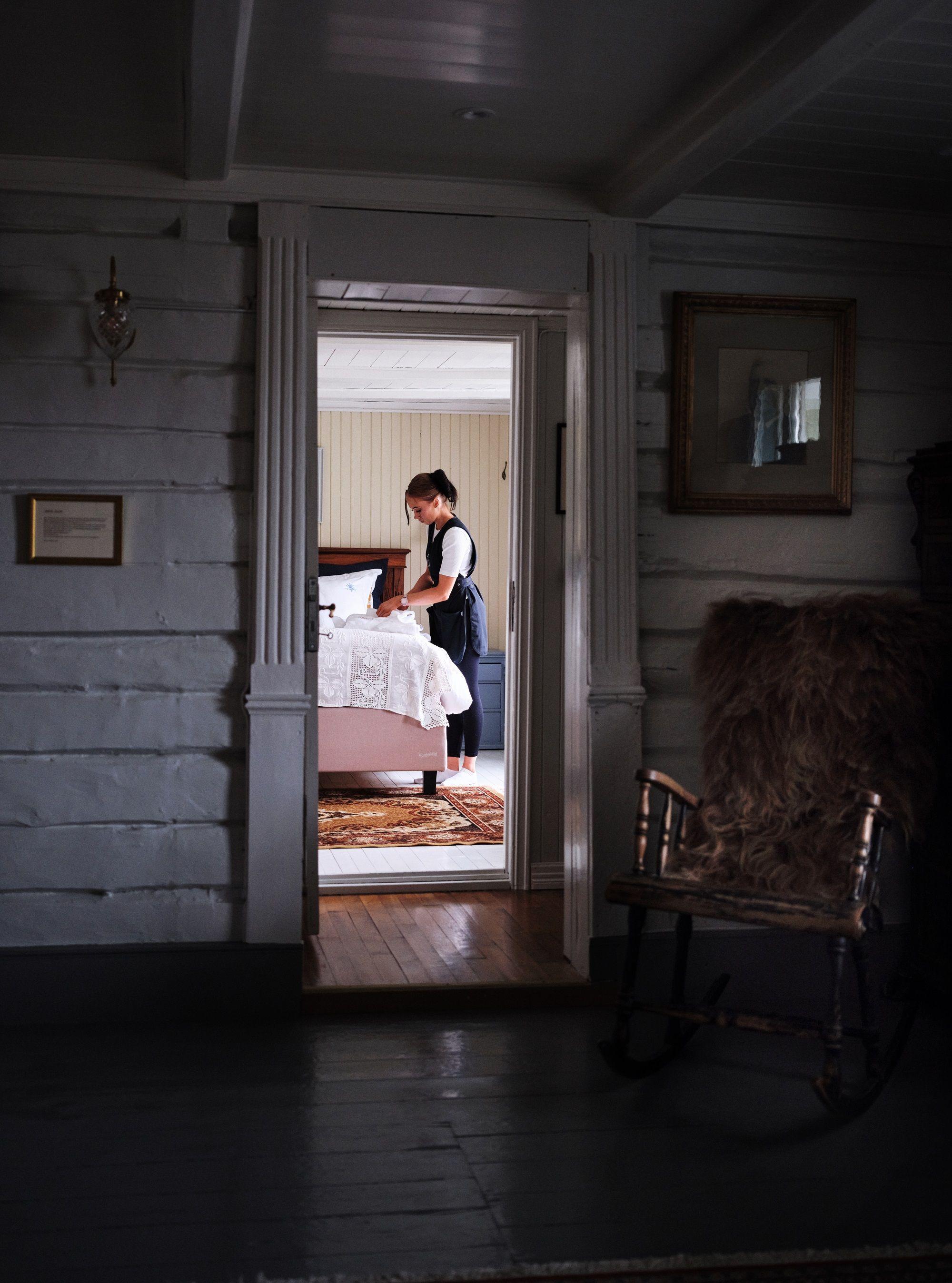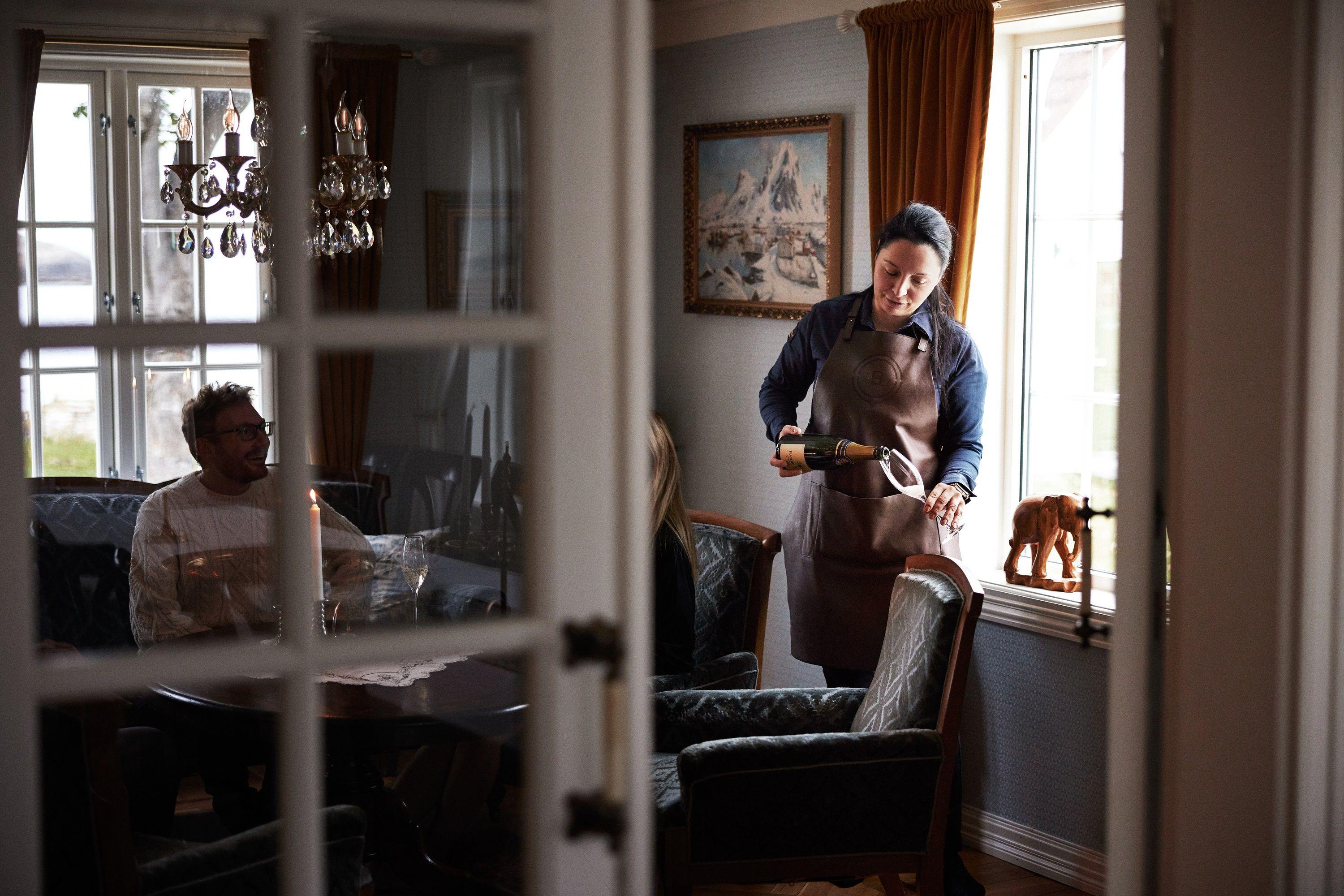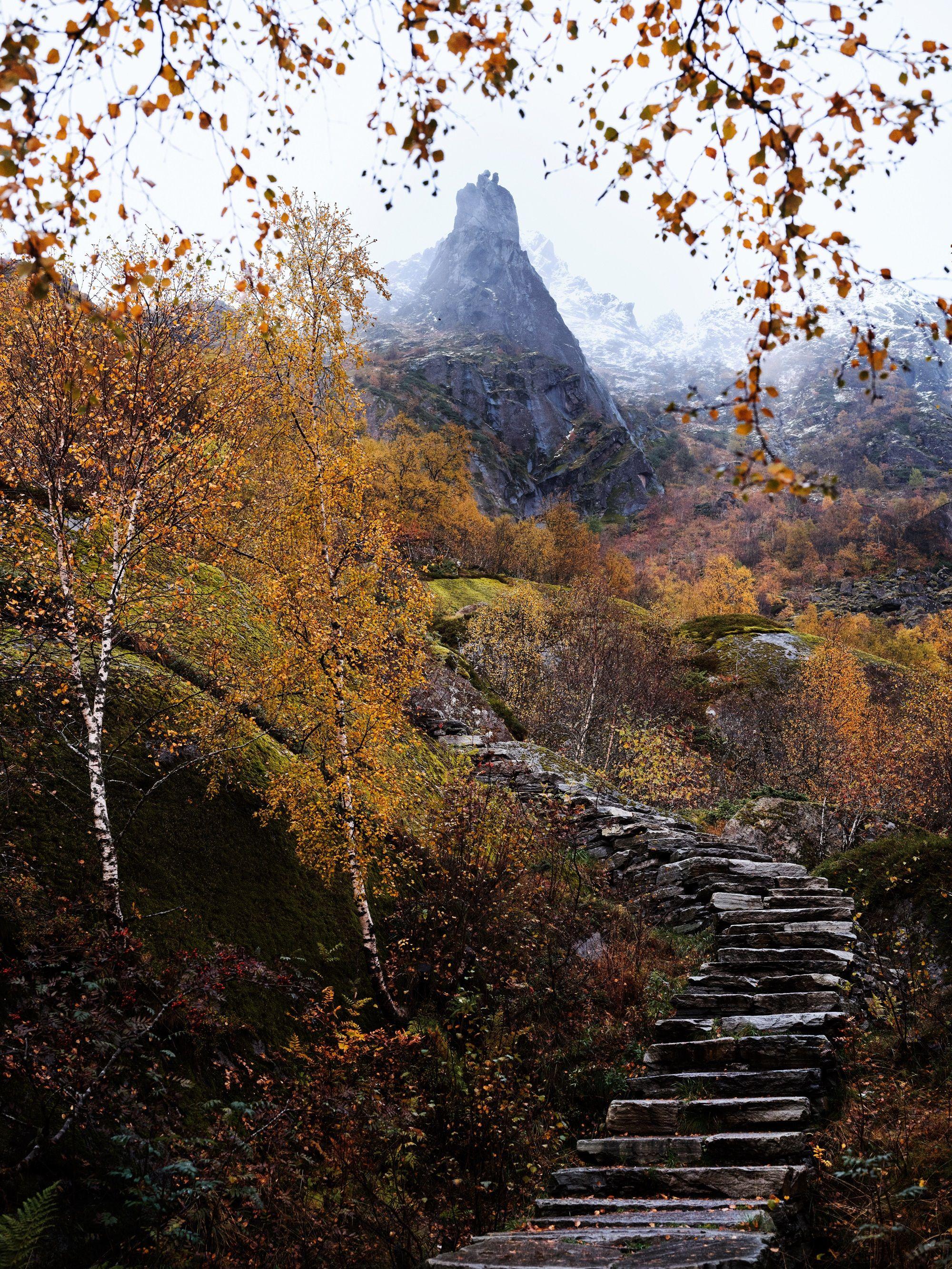
People have weathered the harsh environments of Lofoten to reap its bounty for many centuries. Lofoten is not one place, but the name of a scattering of small communities connected by winding, narrow roads.

One of the small communities that make up Lofoten is Svolvær. Svolvær is where you will find Væreiergården, the manor house, from 1828.
It is a wooden building, traditional to the place and time in which it was constructed. It is painted white to protect it from the rain, the wind, the salt from the sea and simply to add to its beauty. The house is surrounded by water – a dock straight ahead from its entrance, and the vast sea directly accessible from the back. The back of the house is also where you can enjoy the view from a small breakfast terrace outside the building, and also where you will find the sauna. The views from both are spectacular. Every window frames a particular aspect of the beauty outside.

Inside you will discover a carefully restored environment designed to provide the kind of atmosphere you would experience in the best houses from almost two centuries ago, with modern comforts discreetly added on top. Frescos by the artist Gunnar Berg, 1863-1893, have been restored and can be enjoyed in one of the parlours. Original wallpapers have been brought to the surface, and the furniture and fabrics are selected for their authenticity as well as comfort. You will discover how the curve of the staircase’s railing has been shaped by the many hands that have been supported by it, over time moulding it into a perfect, organic shape.

In the Viking era, and probably before, stockfish was exported all the way from Lofoten to Europe. Through the late Middle Ages, it was this stockfish from the north, sold from the west coast of Norway, that made it possible for Europeans to travel for months across the seas to discover new worlds. To this day, the bacalao enjoyed in Portugal requires this essential ingredient from Lofoten to be truly authentic.
In your kitchen, you may delight in turning some of the local foods into meals that you can enjoy in the privacy of your manor house, or you may want the kitchen staff to cook up some local specialties for you, or whatever else you might desire. Should you want to eat out and meet locals or other explorers, you simply walk across a small road to the Børsen restaurant. Sample its Stockfish Royal – a dish created and named for Sonja, the Queen of Norway. It is a tribute to both to her and to the deliciousness of the dish, that this exquisite combination of creamy and salty has become a fixed menu item. This is hearty fare for a hearty people.

The sea surrounds the communities of this Arctic Archipelago and is literally everywhere. Not only do the people of Lofoten live next to the sea, but many make their living from it, one way or another.
Read more

As you walk between the buildings, remember to look up. This is the land of aurora borealis. The eerie green-ish lights that almost seem to be beckoning its observers as it undulates and waves across the sky, are awe inspiring for those lucky enough to witness them.

Unlike the northern lights, Svolvær geita is a natural beauty that does not come and go. The mountaintop is named – the goat - for two characteristic boulders at its peak, that can be said to resemble its horns. Some adventurers have been known to jump from one horn to the other, but there are certainly safer and equally enjoyable ways to experience it. At the bottom of the mountain, you will find a long and winding stair of steps carefully crafted to fit along the mountainside, curving around its rocks, boulders, and vegetation. It feels like a Japanese garden, only a bit wilder and a lot longer, as the stairs wind their way almost to the top. This magical path, crafted by Tibetan craftspeople, in such a remote location way up north, demonstrates perfectly how beauty knows no borders. As you climb, find a stream, dip your hand into the cold water and drink.
